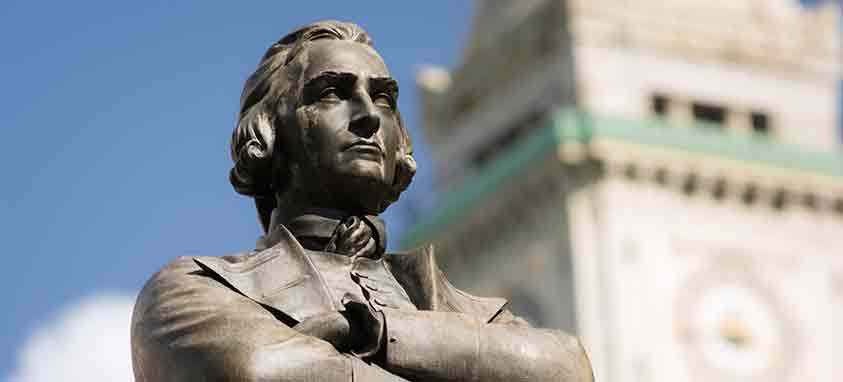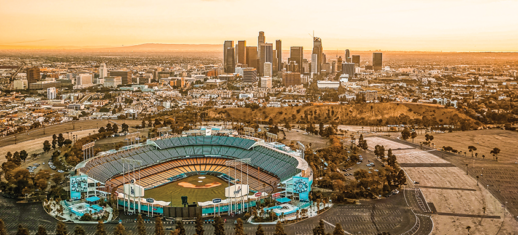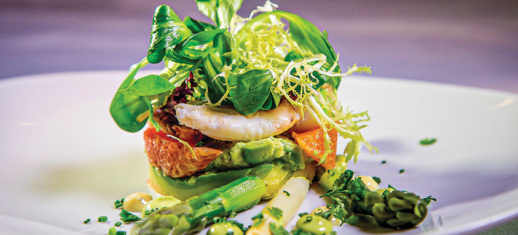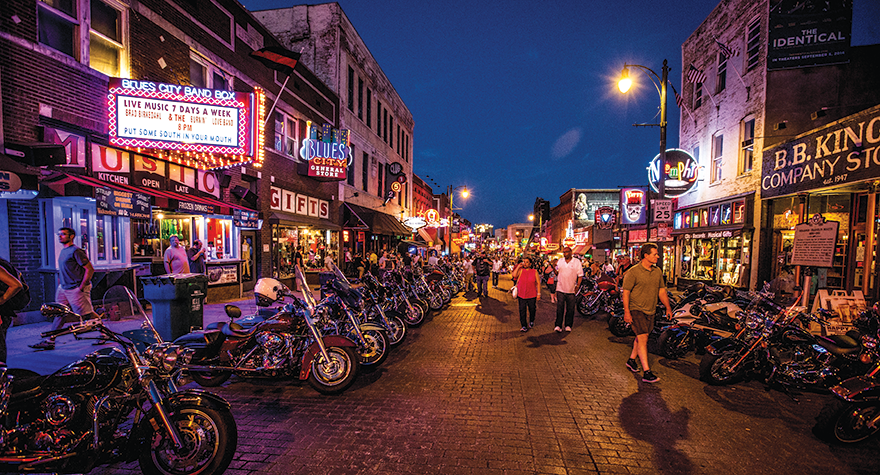Boston puts meetings on a historic trail
Boston, in many ways, is the birthplace of America. The echoes of history still reverberate with every step you take on every cobblestoned street you walk and with every iconic place you visit.
This city has a special place in our hearts—as does its cast of historical heroes and legends—unlike any other city in America’s history. When you walk these old streets, you follow in some pretty impressive footsteps.
It was here that the first protests against the Crown’s taxes took place; Ben Franklin was born here and started his scientific experiments as a boy. Paul Revere made the midnight ride that changed the course of history. It was here that the first shots were fired in the revolution that created the United States of America and a step into the New World.
Boston has created a Freedom Trail for visitors to experience many of the places in which history occurred. For planners, this trail has an extra bonus: It makes for an interesting offsite experience, and you can actually hold your events in many of these locations, on some of the most sacred ground in the United States.
While Boston has done a splendid job of preserving its past, it is also a city poised for the future. It boasts many modern hotels, contemporary museums with interesting meeting venues and technically advanced convention centers.
 Boston Convention & Exhibition Center
Boston Convention & Exhibition Center
History at Every Turn
Some images of Boston are eternal: The Charles River in the early-morning fog, Boston Common (after more than 300 years, it is still a gathering place for locals and visitors) and Boston Harbor, where patriots who didn’t believe in taxation without representation threw tea into the water. Yet for all its history, this city is also uniquely equipped to host modern meetings and conventions.
“Boston and Cambridge provide meeting planners with a unique set of options,” says Patrick B. Moscaritolo, president and CEO of Greater Boston Convention & Visitors Bureau. “From three convention centers that can handle meetings of any size to an international airport less than three miles from Boston Convention & Exhibition Center [BCEC], Boston is one of America’s easiest cities in which to hold your meeting.”
There are 35,000 hotel rooms, with another 3,500 on the way. And Moscaritolo points out that it’s a great walking city “where cobblestoned streets meet glass-enclosed shopping galleries, historic landmarks stand beside cutting-edge restaurants and where renowned museums brush shoulders with trendy nightclubs.”
Blessed by its place in the American psyche and its status as the anchor for a six-state region of the country, Boston stimulates the senses in ways few other cities can. Cambridge, just across the Charles River, is the home of Harvard University, America’s first institution of higher learning, and its stately buildings attest to the fact that it’s also one of the greatest of its kind. There are smells of quintessential Boston edibles, such as chowder and lobster.
There are angles and architecture of buildings more than three centuries old; rolling hills where American patriots were told not to fire “until you see the whites of their eyes” (and, when they did see the whites of those eyes, fired “the shot heard ’round he world”); those cobblestoned streets on which so many historical figures walked; and the saltwater scent of the harbor in which the tea was dumped.
In a city where you can’t walk a block without bumping into history, even the baseball stadium is a historic landmark. Fenway Park, which opened in 1912, is the hallowed home of the Boston Red Sox and just happens to be perhaps the best-loved baseball stadium in America.
Bostonians love their food, and a number of their restaurants serve up a good dose of history along with local culinary specialties. Fortunately, some of the most historic ones also have event space. Union Oyster House, which opened in 1826, bills itself as America’s oldest restaurant—not many eateries can say that Daniel Webster was a customer at its oyster bar. Today, five private dining rooms can accommodate up to 250. Durgin-Park, which gained fame over a century ago for New England specialties such as johnnycake, chowders and apple pan dowdy, has a private dining room seating up to 100.
Parker’s Restaurant, in the Omni Parker House, has a few very unusual claims to fame. For one thing, it’s been open since the late-1800s. For another, its kitchen staff has included workers such as North Vietnam’s Ho Chi Minh and America’s Malcolm X. It also is the birthplace of Boston cream pie; the culinary creation was reportedly invented there in 1856 by French chef M. Sanzian.
 Illustration of the Boston Massacre
Illustration of the Boston Massacre
The Freedom Trail
As Boston grew into a modern metropolis in the post-World War II boom and some older buildings fell victim to “progress” (and the wrecking ball), local folks began to express concern that its historical and architectural treasures would be dwarfed both in size and importance. One of them was Bill Schofield, a writer for the now defunct Boston Herald-Traveler.
This concern grew into a movement, and out of this movement emerged The Freedom Trail. The trail, which winds along a route that includes most of the city’s historic sites, was inaugurated in June 1951.
In 1964, the Freedom Trail Foundation was established to permanently ensure that these American treasures were not only lovingly maintained, but also accessible to Bostonians and 22 million out-of-town visitors each year.
Today, the Freedom Trail runs for 2.5 miles—twice its original length—and 4 million people walk it each year. It’s marked by a red-brick line beginning at Boston Common and weaves its way through downtown, Faneuil Hall and the North End, ending in Charlestown.
The trail connects 16 sites that played important roles in the country’s history. You can walk the tour on your own or, if you prefer to immerse yourself in those days, join a 90-minute tour led by a guide in Colonial garb. However you choose to do it, the 16 places on the trail will live forever in the American psyche.
 Paul Revere Statue in front of Old North Church
Paul Revere Statue in front of Old North Church
Landmarks Along the Way
One of those places is Boston Common. This was the encampment of the British troops who went out to meet their fates at the first battles of the Revolutionary War at Lexington and Concord. In modern times, figures such as the Rev. Martin Luther King Jr. and Pope John Paul II have given speeches here. But the Common has also seen its less-glorious moments. Until 1817, public hangings occurred there regularly.
Another Freedom Trail landmark is the Old State House. Built in 1713, it’s the oldest public building in Boston, and one of the oldest in America. There’s another reason for its fame. On March 5, 1770, British soldiers fired into a crowd of protesters in front of the building, killing five, and the event was quickly dubbed the Boston Massacre by locals. Two of the “dubbers” were Paul Revere and Samuel Adams, who later went on to make history themselves.
Many Americans associate the name Faneuil Hall with the bustling, modern marketplace on the bottom floor of the building. Its status as a marketplace is hardly new—it’s served that function since 1742. A wealthy merchant named Peter Faneuil paid for the construction of the building, which has a grasshopper weather vane still perched on top. Patriots such as Samuel Adams used the building to give rousing speeches in favor of independence. Even today, every July 4, a stirring event takes place in which the Declaration of Independence is read from the balcony to the citizens below to commemorate its first reading here on July 18, 1776.
One of the most popular stops on the Freedom Trail is Paul Revere House. On the night of April 18, 1775, Revere, until then known only as a silversmith, left his North End house and rode into history. The house still stands, much as it was when Revere lived there. At 19 North Square, it’s actually Boston’s oldest home, having been built around 1680 on the site of a burned-down church. Here, attendees can relive every heart-pounding moment of The Midnight Ride of Paul Revere and learn how that ride changed the history of the world. Here, too, they can see some of the silver pieces actually crafted by Revere.
Close by and still on the Freedom Trail is Old North Church. Dating from 1722, it’s Boston’s oldest church, as well as its most-visited historical site. It was from this steeple, on the evening of April 18, 1775, that Robert Newman and Capt. John Pulling Jr. waved two lanterns as a signal to Revere that the British were heading to Lexington and Concord by boat across the Charles River, rather than by land.
The Freedom Trail continues on to the site of the first major battle of the American Revolution. “Don’t fire until you see the whites of their eyes!” was the order given to the ill-trained and ill-equipped colonists who faced off against the British at the battle of Bunker Hill on June 17, 1775. (The battle, however, was actually fought on nearby Breed’s Hill). Today, a 221-foot granite obelisk stands on Breed’s Hill as a monument to those brave patriots who changed the course of history.
Contrary to popular legend, the British actually won the battle. However, it was at great cost: Almost half their 2,200 soldiers were killed or wounded. The colonists, according to historians, had around 500 casualties, including their leader, Maj. Gen. Dr. Joseph Warren, who died during the final charge.
At Breed’s Hill you can almost feel the ground shake with the roar of cannons; almost hear the shouts of combatants and frenzied cries of “Chaaarge!”; and almost hear wails of the dying from both sides. The history not only surrounds you—it overtakes your senses.
“Boston’s iconic Freedom Trail and Freedom Trail historic sites offer one-of-a-kind venues that provide very unique experiences for groups,” says Suzanne Taylor, executive director of Freedom Trail Foundation.
“Filled with over 300 years of history, Boston and the Freedom Trail can offer groups true national treasures—stunning architecture, art galleries, museum exhibits and programs that really bring to life the birth of America. Here, your attendees can walk in the footsteps of America’s Founding Fathers. And attendees can hear the echoes of history reverberating all around them.”
Hold Your Meeting on the Freedom Trail
When you meet, dine or hold team-building exercises on the Freedom Trail or at other Boston historical sites, you’re literally following America’s footsteps to freedom. You’re following, too, the footsteps to an experience your attendees will never forget, and a shared experience that will help them work more effectively together after they’re back home.
Discounted tickets, known as Patriot Passes, are available for groups at the Old South Meeting House, Old State House and Paul Revere House. Private guided tours are also available and can be booked with the Freedom Trail Foundation.
In addition, some historical sites, both on and off the Freedom Trail, can be used for team building, among them Fenway Park, Old North Church and Boston Tea Party Ships and Museum. Massachusetts State House has been hosting meetings on the business of the Commonwealth since 1798. The public event spaces on the second floor—including the Great Hall, Grand Staircase, Nurses’ Hall and Gardner Auditorium—can accommodate up to 750 people.
Old South Meeting House is where the Boston Tea Party started. It has four main event areas that can accommodate 650. If you hold an event there, you’ll be holding it at the site of the most important “party” in American history.
Paul Revere House has announced some big news for meeting planners. In 2016, for the first time ever, the complex will be available for meetings and tours, allowing participants to access the rooms where Revere and his family lived.
A Team, a Ballpark & a Love Affair
The Boston Red Sox, unlike pretty much any other Major League Baseball team, belongs to more than one city. It belongs to hundreds of cities and towns spread across six states. And it may well be the most beloved institution in a region known for beloved institutions.
When the team won the 1918 World Series—led by Babe Ruth, before he was traded to the rival Yankees—no one could have possibly thought this would be the team’s last World Series championship for 86 years. Oh, the Sox came close some years, such as in the ’67 Series and the ’75 Series. And it produced some of baseball’s most memorable stars, including Ted Williams and Carl Yastrzemski. In the end, however, New England hearts were always broken.
By the time the BoSox finally won another World Series, in 2004, four generations of New Englanders had lived and died without seeing a World Series victory. In fact, many Bostonians can tell you personal stories of going to visit family graves after the 2004 victory, and placing notes such as “We did it, Dad!” on the stones.
As if to put a finishing touch on the World Series drought, the Sox won again in 2007 and 2013. “The Curse of the Bambino,” as it was called, was finally over.
The Red Sox play in Fenway Park. Built in 1912, it’s baseball’s oldest stadium. It’s also one of Boston’s coolest meeting spaces. It features 11 meeting/event rooms, with a total of 80,000 sq. ft., and that doesn’t include the thousands of attendees who can be accommodated in the stands.
Resources
Greater Boston Convention & Visitors Bureau
bostonusa.com
The Freedom Trail
freedomtrail.org
Major Meeting Venues
Boston
Boston Convention & Exhibition Center
Striking technological marvel; eight-minute drive from Logan International Airport (BOS); 516,000 sq. ft. of exhibit space; 160,000 sq. ft. for meetings; Wi-Fi throughout.
Boston Harbor Hotel
Accessible by water, on historic Rowes Wharf Harbor; Forbes Five-Star hotel; upscale accommodations; dramatic views; meeting space on waterfront; 230 guest rooms; 20,000 sq. ft. of meeting space.
Boston Marriott Copley Place
Downtown location in Copley Square; convenient to Boston Common; great shopping; heated indoor pool; Starbucks; 1,147 guest rooms; 70,000 sq. ft. of recently renovated meeting space.
Boston Park Plaza
A Boston landmark since 1927; six restaurants; 24-hour business center; two blocks from Boston Common; 39 meeting rooms; 1,054 guest rooms; 50,480 sq. ft. of meeting space.
Fairmont Copley Plaza
1912 landmark recently completed a $20 million renovation; close to Freedom Trail; 24-hour fitness center; meeting spaces have Renaissance atmosphere; 383 guest rooms; 23,000 sq. ft. of meeting space.
Hilton Boston Logan Airport
Climate-controlled walkways to airport terminals; 10-minute drive from downtown; open, airy public spaces; fitness center; indoor pool; jogging paths; business center; A/V rental; 599 guest rooms; 30,000 sq. ft. of meeting space.
Hotel Commonwealth Kenmore Square
Luxury hotel close to Fenway Park and Kenmore Square; Eastern Standard restaurant; free Wi-Fi; 245 guest rooms; 10,000 sq. ft. of meeting space.
Hyatt Boston Harbor
Winner of Boston’s Green Business Award; great views of city skyline; 24-hour business center; free airport shuttle; outdoor patio dining; 270 guest rooms; more than 22,000 sq. ft. of meeting space.
Hyatt Regency Boston
Steps from Freedom Trail landmarks such as Boston Common and Faneuil Hall; heated indoor pool, fitness club and sauna; mass transit stop; excellent Avenue One Restaurant; 502 guest rooms; 30,000 sq. ft. of meeting space.
Hyatt Regency Cambridge
Great views of the Boston skyline and Charles River; AAA Four Diamond winner; 24-hour gym; indoor pool with retractable roof; Zephyr offers regional cuisine; 470 guest rooms; 25,000 sq. ft. of meeting space.
InterContinental Boston
Overlooking the waterfront; AAA Four Diamond winner; fitness club; heated lap pool; spa; French and Japanese restaurants; 424 ultra-modern guest rooms; 32,000 sq. ft. of meeting space.
John B. Hynes Veterans Memorial Convention Center
Sky bridges connect the center to three hotels and two shopping destinations; 176,480 sq. ft. of exhibit space, 91,000 sq. ft. of meeting space; 4,000-seat auditorium.
Omni Parker House
Opened in 1855; Boston cream pie was invented here at Parker’s Restaurant; two stylish lounges; gift shop; meeting rooms include rooftop ballroom; 551 guest rooms; 23,000 sq. ft. of meeting space.
Renaissance Boston Patriot Place Hotel
AAA Four Diamond Hotel in Foxboro; adjacent to Gillette Stadium, home of New England Patriots, and Patriot Place shopping and dining; Twenty8 Food & Spirits features upscale American cuisine; 156 guest rooms; 10,000 sq. ft. of meeting space.
Renaissance Boston Waterfront Hotel
Ultra-modern hotel with city and ocean views; live music in Capiz Lounge; fitness center; Italian cuisine at award-winning M.C. Spiedo Restaurant; 471 guest rooms; 20,736 sq. ft. of meeting space.
Revere Hotel Boston Common
Modern hotel conveniently located near Boston Common; walking distance to many attractions; 356 guest rooms; 36,000 sq. ft. of event space.
Seaport Hotel & World Trade Center
Largest meeting space (180,000 sq. ft.) of any Boston hotel; 118,000 sq. ft. of exhibit space; waterfront location; great city and harbor views; water taxi and subway stop right outside.
Sheraton Boston
Recently unveiled $20 million renovation of lobby and guest rooms; adjacent to Hynes Convention Center; two restaurants and Starbucks; Green Tangerine Spa; 450 guest rooms; 70,000 sq. ft. of meeting space.
Taj Boston
Located near Theater District and Hynes Convention Center; award-winning service; 273 guest rooms, including 44 suites; 15 private function rooms; 18,000 sq. ft. of meeting space.
The Westin Boston Waterfront
AAA Four Diamond award-winner; connected to Boston Convention & Exhibition Center; Sauciety waterfront restaurant; car rental desk in lobby; comedy club; fitness center; 793 guest rooms; 89,000 sq. ft. of meeting space.
The Westin Copley Place, Boston
Only Massachusetts hotel with Green Seal certification; located in Back Bay; convenient to shopping, museums, landmarks; four dining options; AAA Four Diamond winner; 803 guest rooms; 54,000 sq. ft. of meeting space.












